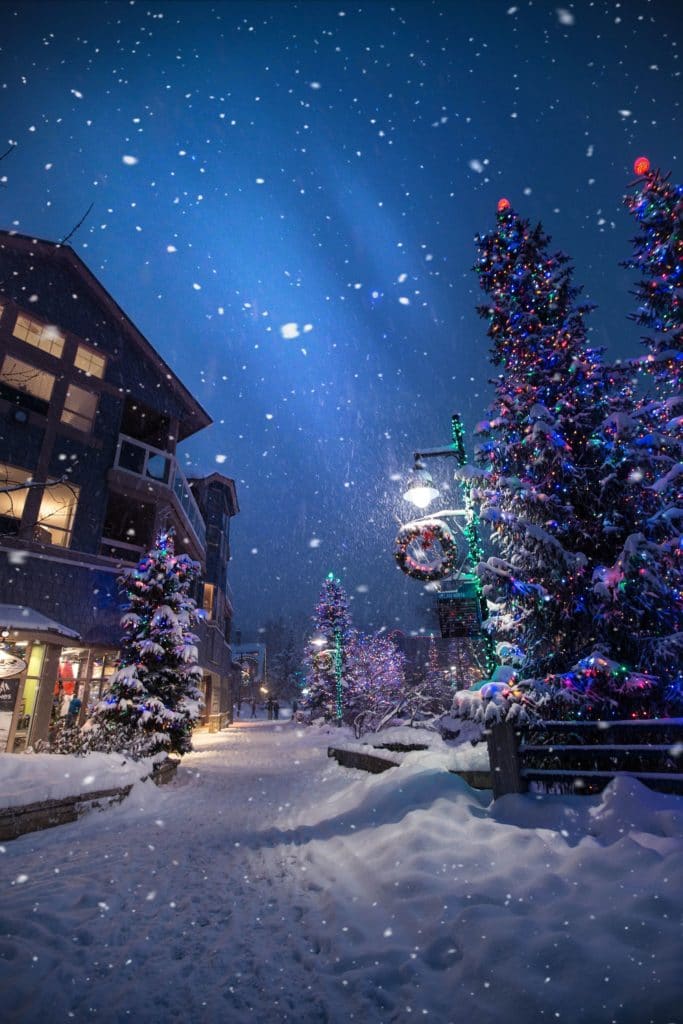The holidays are a magical season, a time to cherish and celebrate with your loved ones.
With all of the hustle & bustle that comes with travel, gift-giving, parties and celebrations, and food preparation, it’s easy to lose sight of how all of these things impact our environment. It’s no surprise that consumption increases dramatically around the holiday season. In the UK, food, travel, lighting and gifts for Christmas alone contribute to 5.5% of the annual carbon footprint [2]. In Canada, most holiday expenses go towards traveling and gifts [3].

There’s good news! With impact-driven products and resources readily available, there are a number of easy ways that you can keep the planet in mind this holiday season while enjoying the festivities of the day.
Making this holiday season the most wonderful (and environmentally-conscious) time of the year
Giving good goods
In traditional Western Christmas holiday spirit, gift giving is an integral part of the celebrations around this time as well as how we show our loved ones how much we appreciate and often think of them. While gifts and presents are intended to be a thoughtful exchange, the increase in production, demand, shipping, and waste inevitably have a negative impact on our planet.
Did you know? Added food waste, shopping bags, packaging, wrapping paper, bows and ribbons add up to an additional 1 million tons of trash going into landfills each week.
Thoughtful gift giving
- Secret Santa – it’s estimated that in the UK, each person spends an average of £92 on unwanted gifts [4]. Participating in a Secret Santa exchange is not only great for the planet, but also for your budget!
- Buy sustainable products – opt for gifts that help your friends and family become more eco-friendly. For example, a high-quality insulated bottle will offer the opportunity for them to enjoy their favorite drink on the go, removing the need for disposable cups or plastic water bottles.
- Experiences – Instead of buying a gift, treat your loved one with a theater or opera performance, a romantic dinner, a day at a spa, or a purposeful travel opportunity. The possibilities are virtually endless – and invaluable.
- Wrapping paper & cards – single use wrapping paper and cards are very wasteful. Additionally, it’s almost impossible to recycle paper with a shiny or wax coating. Opt for plain wrapping paper that is more easily recycleable, reuse newspapers, or
- Say no to glitter – glitter is essentially a microplastic, which can be extremely harmful to marine life [5], so avoid glittery cards, decorations, cosmetics, and other such items.

Did you know? 8,000 tons of wrapping paper are used during the holidays each year, equating to roughly 50,000 trees. Good news! According to Stanford University (and TreeHugger) if every American family wrapped three presents in reused materials, the saved paper would cover 45,000 football fields!
Get your decoration on (sustainably)
Did you know? Americans create 25% more waste in the month between Thanksgiving and New Years. That adds up to an extra 1 million tons of trash that go straight to the landfill or end up in the ocean.

Conscious consumption
We all know that one of the best parts of coming home or celebrating the holidays with friends and family is sharing a delicious home-cooked meal. From your mom’s famous stuffing, to grandma’s cranberry recipe, to your uncle’s turkey carving skills, food is absolutely what brings people together.
Agriculture is one of the leading causes of greenhouse gas emissions, and the global food system – including not only agriculture, but also food transportation, packaging, and food waste – accounts for roughly 30% of global emissions [6].
Research shows that most of the carbon footprint of a meal comes from the production and distribution of ingredients [7].

Cleaning up after scarfing down:
- Support your local community – purchase organic and local food when planning your holiday meals!
- Freeze leftovers – reduce food waste by freezing leftover food, for later use
- Share leftovers – when appropriate, ask guests to bring containers for taking leftovers home after the party
- Reusable cultery – while single use is convenient, opt for using biodegradable or compostable plates & dishware
- Donate – Give your excess food or grocery to a local organization that can supply meals to those in need
- Guesstimate your guestlist – When preparing for your upcoming holiday feast, get a proper list of who will be in attendance so that you prepare exactly what you need without overdoing it
- Our eyes are bigger than our stomachs: use smaller-sized plates so you and your guests are not tempted to fill up your plate with more food than you can actually eat
With true holiday spirit in mind, we know that this time of year is all about spending time with those we care about, and showing them just how much we appreciate them, too. While gift-giving, food preparation, and decorations are not the focus of the this season, there are so many ways to keep the environment in mind while not being the Scrooge of the holiday. To all those celebrating, happy holidays & cheers!
